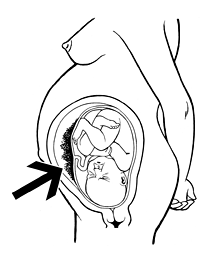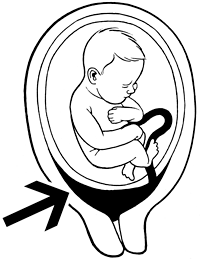Any bleeding in later pregnancy is most likely to indicate a problem with your placenta. If you are bleeding, you will need medical attention.
Placental abruption

Placental abruption is the most common cause of bleeding during the second half of pregnancy and is often associated with abdominal pain or tenderness. Placental abruption is when part, or all, of the placenta separates from the wall of the uterus before the birth of your baby. The amount of bleeding varies and the cause is not always known. Sometimes, there is no bleeding but you will have sudden and severe abdominal pain. Treatment may involve monitoring you and your baby, bed rest and in more serious cases, the birth of your baby.
Low lying placenta (Placenta praevia)

This is when some or the entire placenta implants in the lower part of the uterus, instead of being attached to the top part of the uterus. When the cervix starts to open or if the uterus contracts, the mother (not the baby) can bleed from the placenta. It can be quite serious and generally you will be admitted to hospital for careful monitoring of you and your baby. In most cases you will need a caesarean birth.
Related information
Disclaimer
The Women’s does not accept any liability to any person for the information or advice (or use of such information or advice) which is provided on the Website or incorporated into it by reference. The Women’s provide this information on the understanding that all persons accessing it take responsibility for assessing its relevance and accuracy. Women are encouraged to discuss their health needs with a health practitioner. If you have concerns about your health, you should seek advice from your health care provider or if you require urgent care you should go to the nearest Emergency Dept.